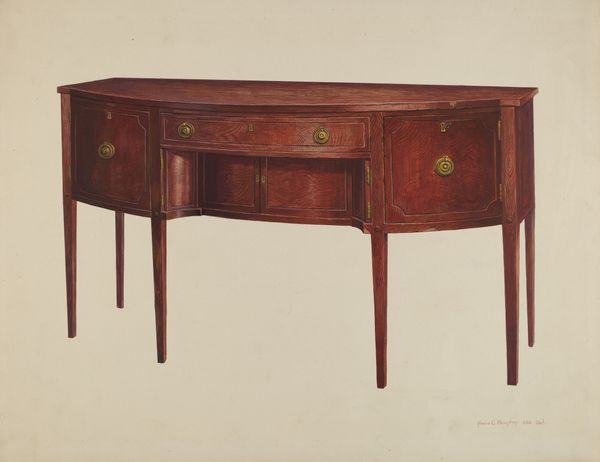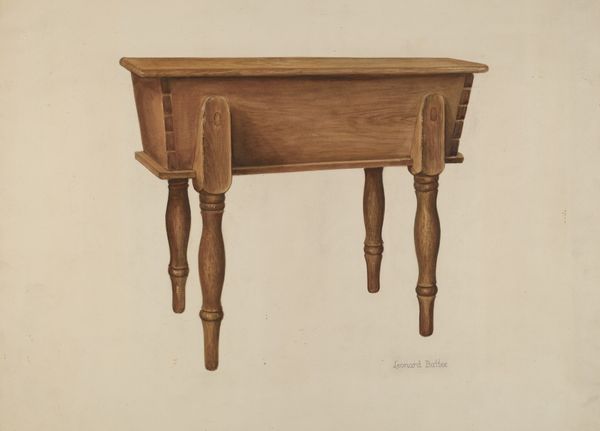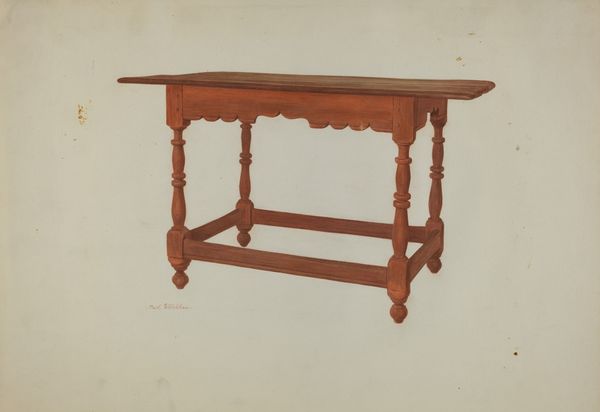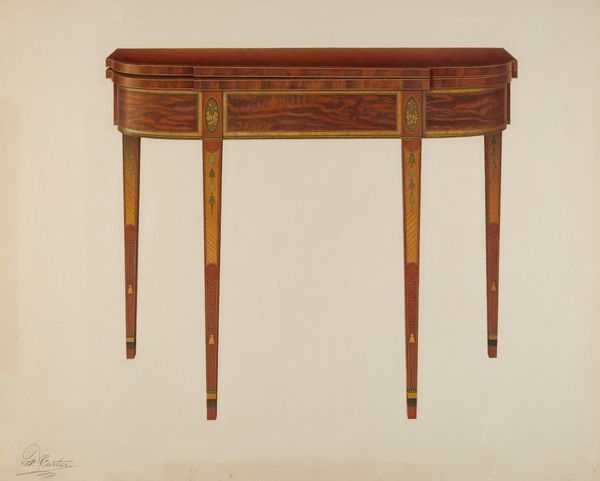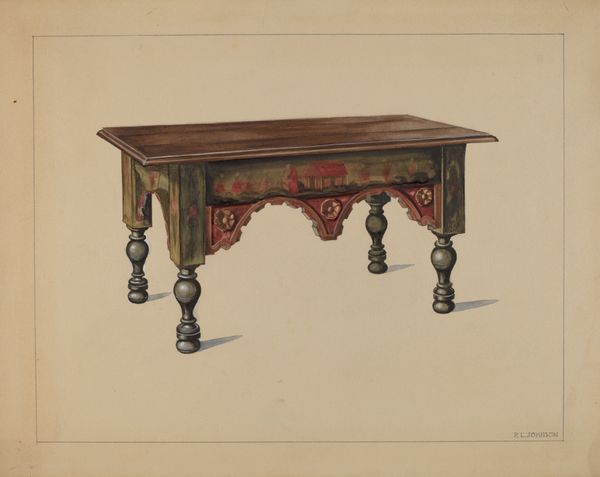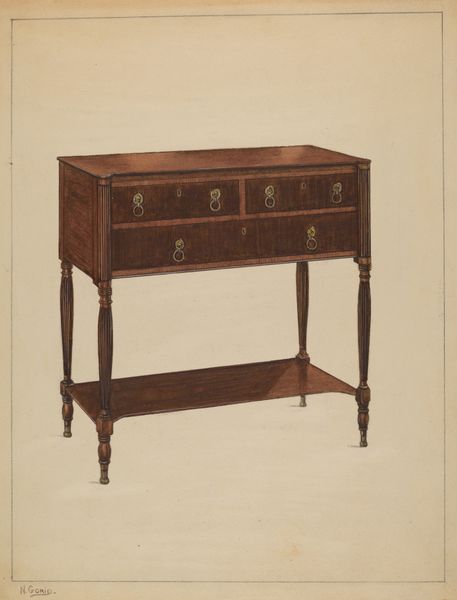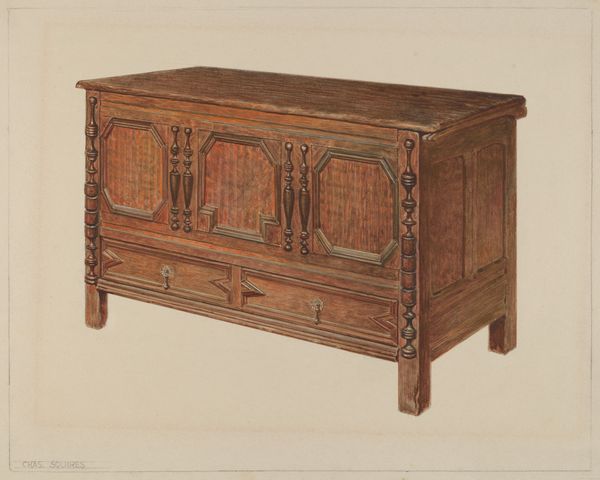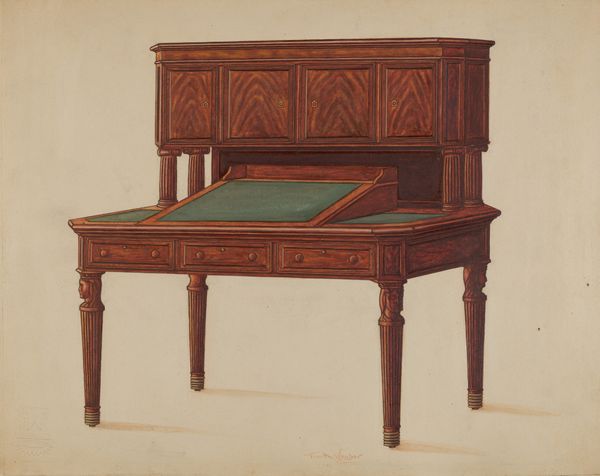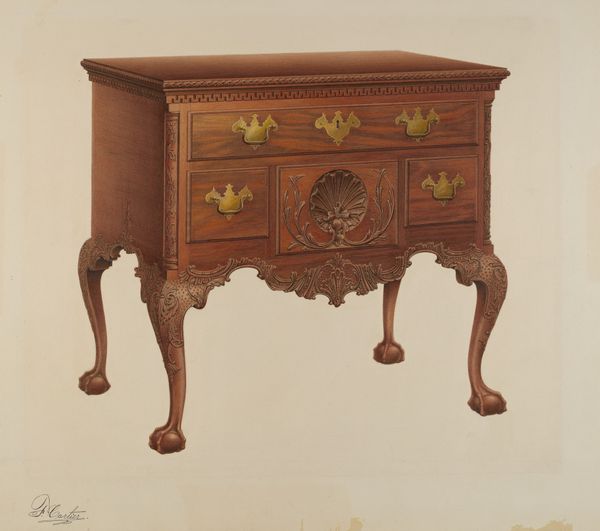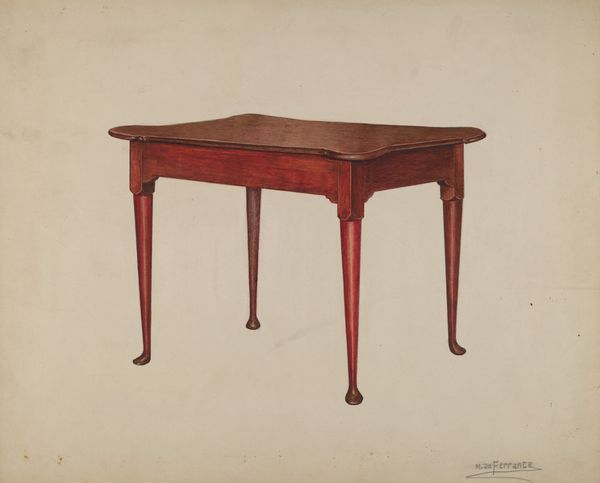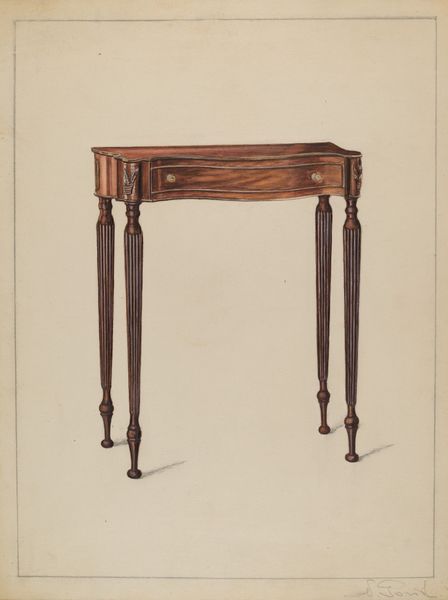
drawing
#
drawing
#
academic-art
#
watercolor
Dimensions: overall: 23 x 28.8 cm (9 1/16 x 11 5/16 in.) Original IAD Object: none given
Copyright: National Gallery of Art: CC0 1.0
Curator: Editor: So, this is Frank Wenger’s “Desk,” from 1936, rendered in watercolor. The precision is striking. What can you tell me about this piece, focusing perhaps on its function? Curator: What immediately grabs my attention is the confluence of design and function. Consider the materiality: the depicted wood suggests not just a surface, but also labour, trade routes, colonial exploitation. How accessible would this desk have been to a wide array of individuals in 1936, given the cost of high-quality wood and craftsmanship? Editor: Right, so it speaks to a certain economic class. I hadn't considered that. But what about the stylistic choices? Are they simply aesthetic, or do they serve a function? Curator: Style here becomes a signifier of power, a way to legitimize authority. This “academic art” style drawing is presenting us with a proposed design. What sort of industry standards, workshop conditions, and training was Wenger engaged in? Were drawings like this instrumental in creating an atmosphere of elitism in design or furniture-making circles at the time? Editor: That's a great point. This wasn't just a desk, but a carefully crafted commodity with social implications from labor to trade. So by examining this seemingly simple watercolor, we gain a richer understanding of its socio-economic and historical background. Curator: Exactly. It becomes a point of entry into exploring production and consumption in the 1930s, wouldn't you agree? Editor: Yes, this really changes how I look at these seemingly mundane renderings now. I am more conscious of considering an artwork’s ties to commerce and manufacturing!
Comments
No comments
Be the first to comment and join the conversation on the ultimate creative platform.
